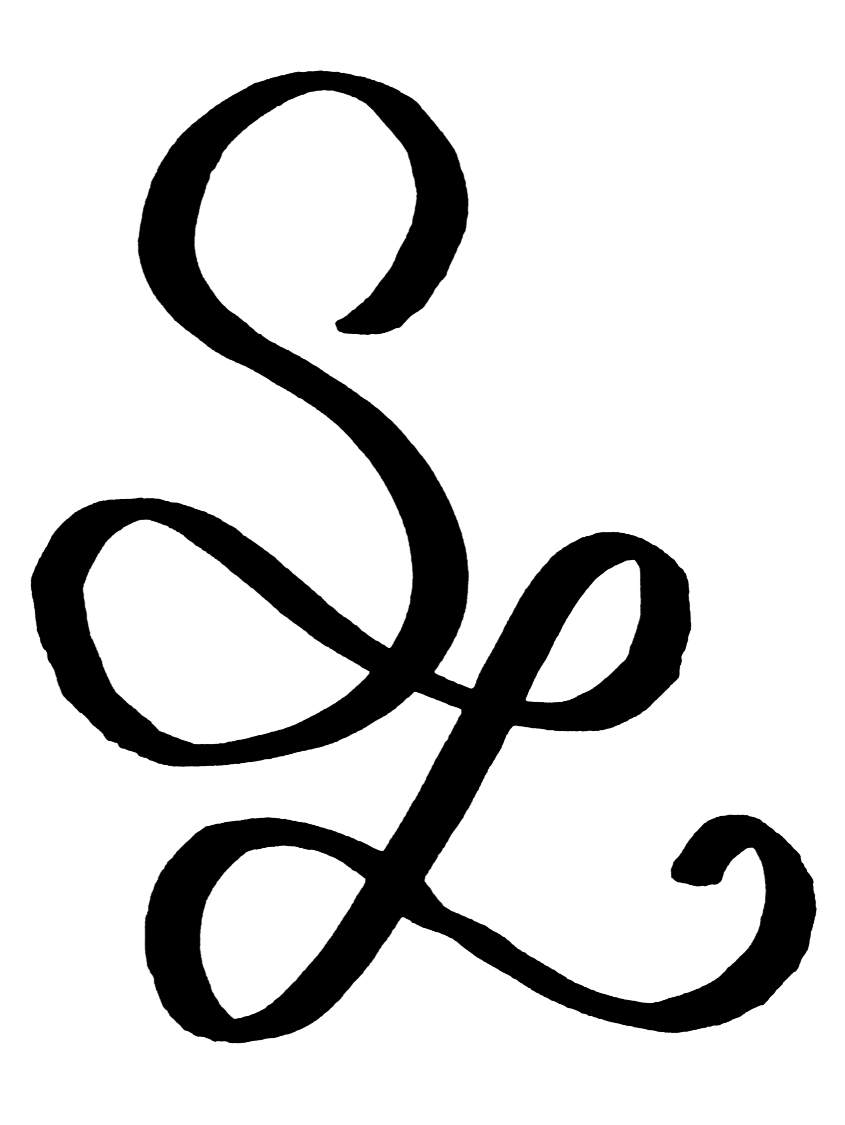CONCEPT Design
MASTER OF FINE ARTS
My favorite projects in and out of the workplace always had an inventive edge to them. I figured it was time to hone my technical skills and start collaborating with more talented creatives in starting an MFA program at SCAD.
Creating awe has always been my motivation: catalyzing experiences that make vivid lasting joyful memories; helping others realize their power through collaborative projects; intentionally designing and curating the feeling of happiness in ways large and small are the paths I chase. Good design makes lasting memories.
I feel that in the world of Themed Experience Design, I will have found my people: a community that is not afraid to take a concept to the extreme and wiggle around in the possible embellishments, new technologies, and strategic partners.
THEMED ENTERTAINMENT DESIGN PROJECTS
WONDERLANDS: ONE LAND, ENDLESS WONDERS
An illustrated masterplan of WONDERLANDS I digitally collaged using Midjourney, found images, Procreate, and Photoshop.
Welcome to WONDERLANDS, a joyous and dangerous quest. Where things are not as they seem. The Queen of Hearts has decided that she does not want to rule just one world but all worlds and YOU are her newest subject. By royal decree, you have been summoned to present yourself before the Queen. But things go awry as you are aided by the Hair and the Hatter, a cat or two, and a deck of playing cards. You must now decide your journey and your fate:
Do you side with reality or give in to the wonder before it's too late?
BELOW: elements I led across retail, marketing, conceptual development, and narrative (including ride metrics by Sergio Checo Cedillo Villalobos and hand-drawn illustrations by Ira Kristel Caro):































WONDERLANDS merges the most beloved aspects of theme parks under a novel experience framework, putting our visitors in control of the narrative. Located in Las Vegas, this adult-leaning immersive art environment offers a variety of entertainment options for all audiences.
A closer look at the targeted marketing plan I developed
Complete group presentation, mixing in phenomenal work from Alanoud Aldbian, Ira Kristel Caro, Sally Lindsay, MacKenzie Robertson, Noah Samors, and Sergio Checo Cedillo Villalobos CAN BE FOUND HERE.
Sometimes it can be fun to see a little process development! This was my initial pitch for a term project before we split up into a group project. We compromised to do Alice in Wonderland as a public domain narrative, but I still think this one-night-pitch-deck was a cool experimental idea.
Fairy Glampsite


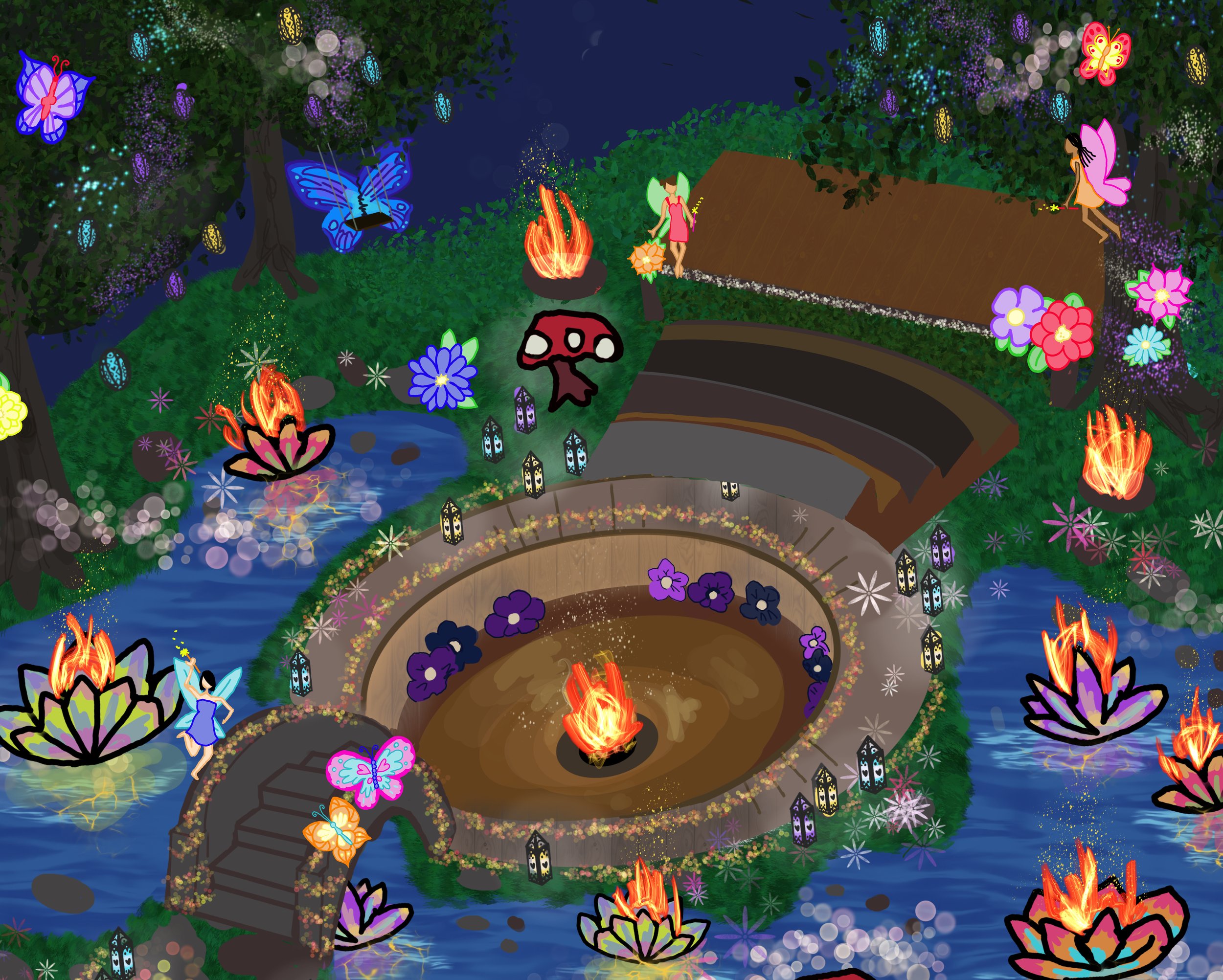




I developed a Fairy-Themed Glampsite project that is thematically focused on the four elements, by which Fairies used to be categorized in folklore: Earth, Water, Fire, and Air. There will be hospitality fixtures, as well as meditative experiences associated with the four elements. See some initial concepts below. This campsite would be located near Dollywood and the Great Smoky Mountains for those seeking a unique nature-based destination. Below are some images, and the more extensive presentation below has my work on-site planning, premium experiences, food and beverage, budgeting, operations, marketing strategy, and more feasibility studies.




































































MODELMAKING: SUPER MARIO HOTEL
These two models come together to create a hospitality concept for a Super Mario world.
This first model doubles as a movie set and a Princess Peach luxury hotel room experience. I used half-inch scale to experiment with furniture design and finite details, such as her Mario Kart racing mantle and Nintendo Switch gaming area. I modeled the floor plan on Revit, then built it up in 3D using paper, foam, and paint. I also Photoshopped unique printed elements such as wall designs and framed artwork.
The Donkey Kong swim-up splash bar and resort offers a new spin on themed hotels. The eighth-inch scale encouraged me to develop my skills in master planning. I tried to frame the layout with ‘Instagram-friendly’ vignettes, beloved character interactions, and an irresistible paradise worthy of a vacation splurge. I built on the skills above by utilizing air-dry clay, a 3D pen, and resin.
Story of the stars
In my first quarter (Fall 2022) we developed the following project, The Story of the Stars! We invite visitors to take a celestial voyage through the zodiac to learn the legends and myths of how Gods, Heroes, and Monsters earned their place to be memorialized amongst the stars.
This ride deconstructs the night sky, dazzling Voyagers with depictions of some of the most legendary Greek battles, love affairs, and myths. As they set sail through the cosmos, Voyagers will learn the epic stories behind the 12 horoscope signs, led by their historic guide, the Oracle of Delphi.
The Story of the Stars is a stand-alone urban installation.
Our Voyagers arrive with (or purchase) timed tickets to ascend into the stars. When not on the ride, Voyagers can be immersed in our Planetarium Lounge and explore horoscope alcove exhibits, sprinkled with collectible keepsakes.




































I developed this project with my classmates Ruby Zhang, Zena Liu, Isabella Christy, Devon Lee, & Jenny Jett. I led and developed the sections on: concept development; all mood boards; thematic breakdowns for ride story beats; planetarium atrium diagram and programming; merchandise illustrations, research and inspiration; user experience flow and chart depiction; market research; and, overall leadership in breaking down and assigning deliverable responsibilities.
Please note that much of my implemented themed entertainment design work can also be found in the EVENT PLANNING section of this portfolio.
I find design to be an amorphous and all-encompassing little world, therefore on this page I'm going to give myself permission to touch on some random design-based projects and experiences that I want to highlight somewhere on the portfolio. Hope that's okay with you!
Graphic design
Here's a short video I made in my Storyboarding and Previsualization elective at SCAD. We were told to animate a one-minute song without lyrics and I chose "Money's No Option" by Circles Around the Sun. To develop this video I taught myself Adobe Premier Pro, but we also used Toon Boom Storyboard Pro, Photoshop, Illustrator and Procreate in the course. To see some of my other animation storyboards and animatics, click through here.
AUTOCAD + PHOTOSHOP
For this project, we had to establish a new site plan for an underdeveloped area. I chose an area beside the railroad track near the Salvation Temple Holiness Church along Plant Street in Savannah.
In my imaginary enhancement, a neighborhood with limited greenery would now have access to community gathering and performance spaces, along with a playground, pickleball, ping pong, chess, and basketball.
This project taught me how to use AutoCAD, Illustrator, Photoshop, and Fresco to bring this vision to life.
Sketchup, ENSCAPE, + Photoshop
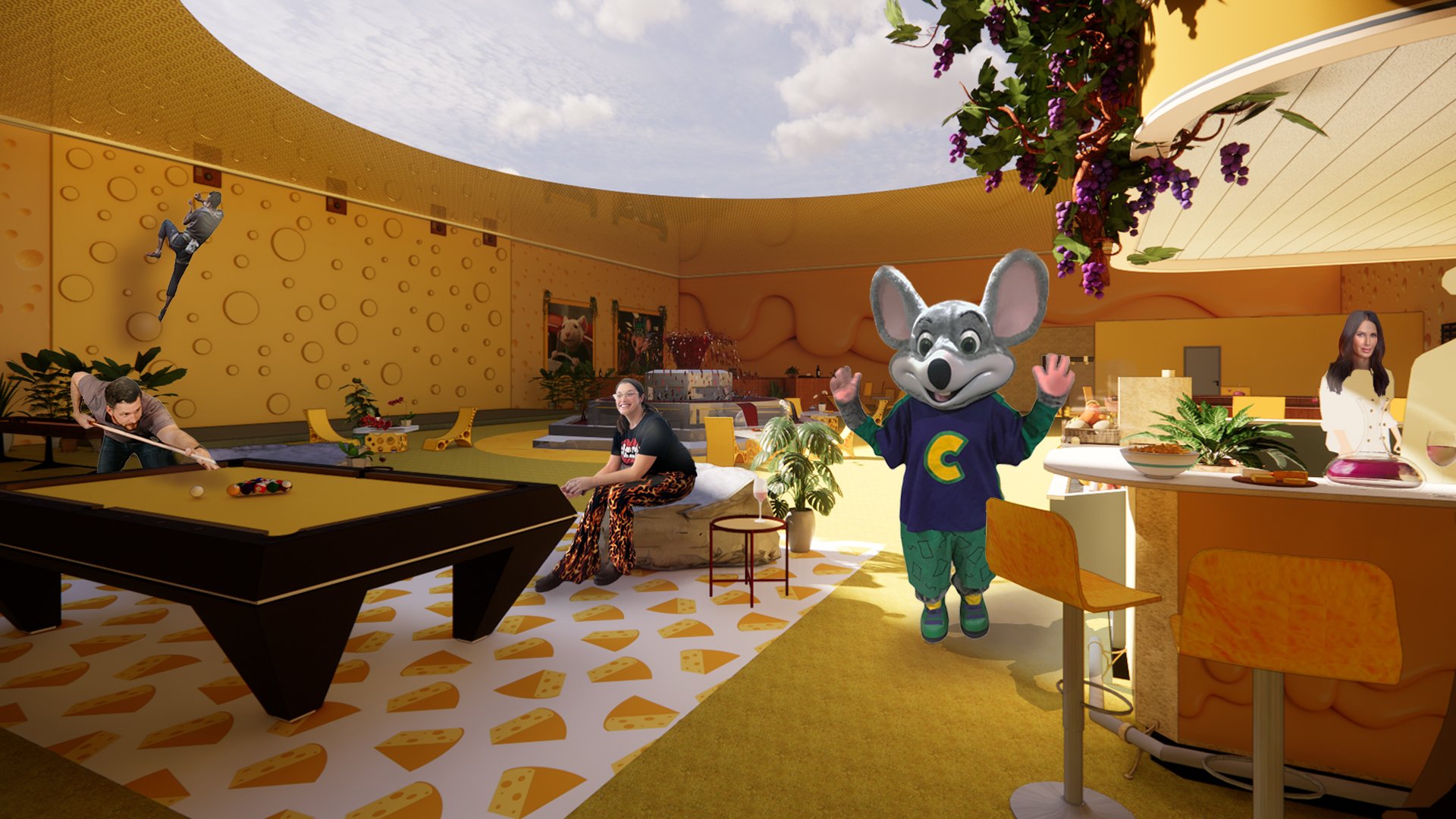

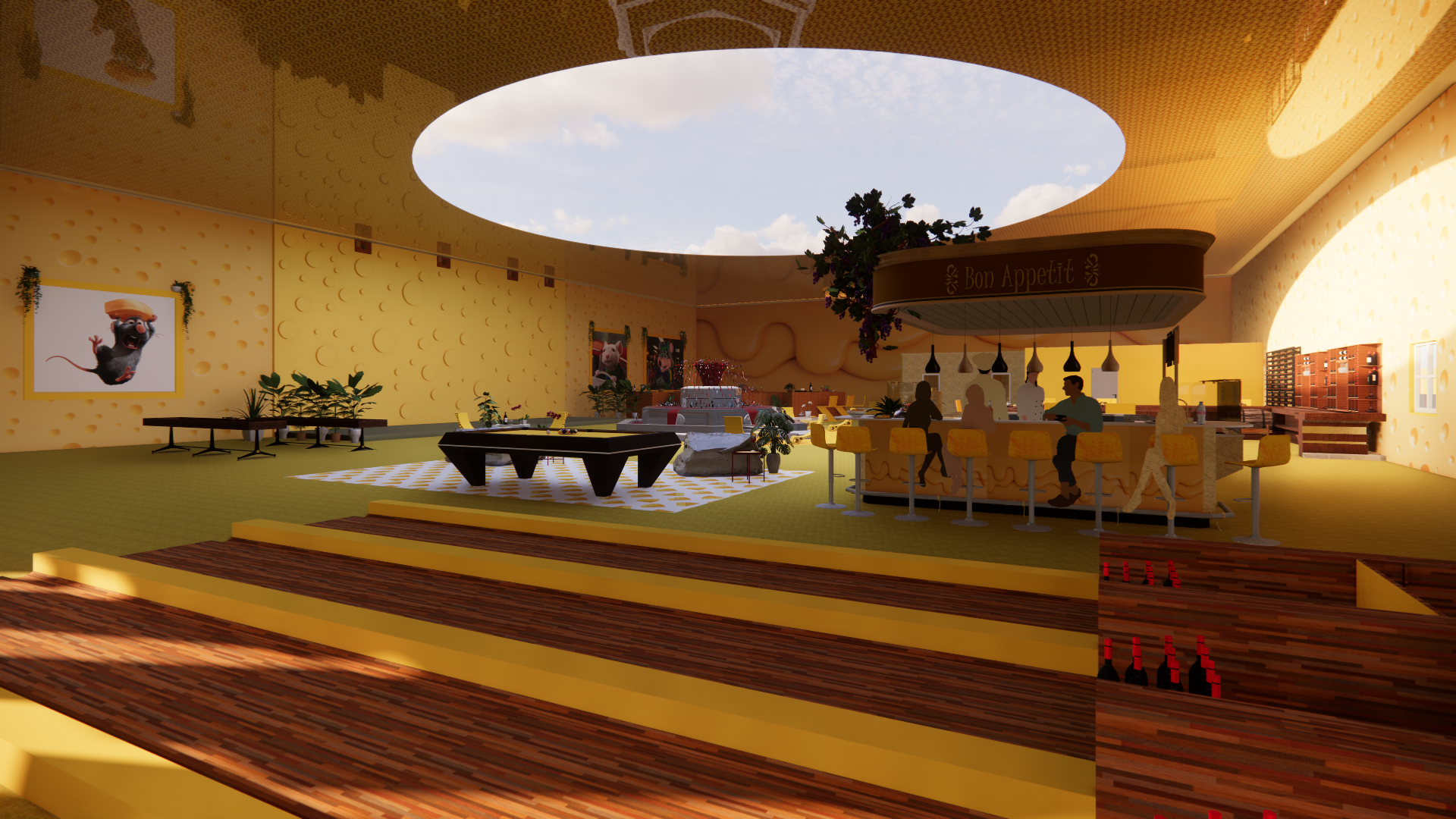
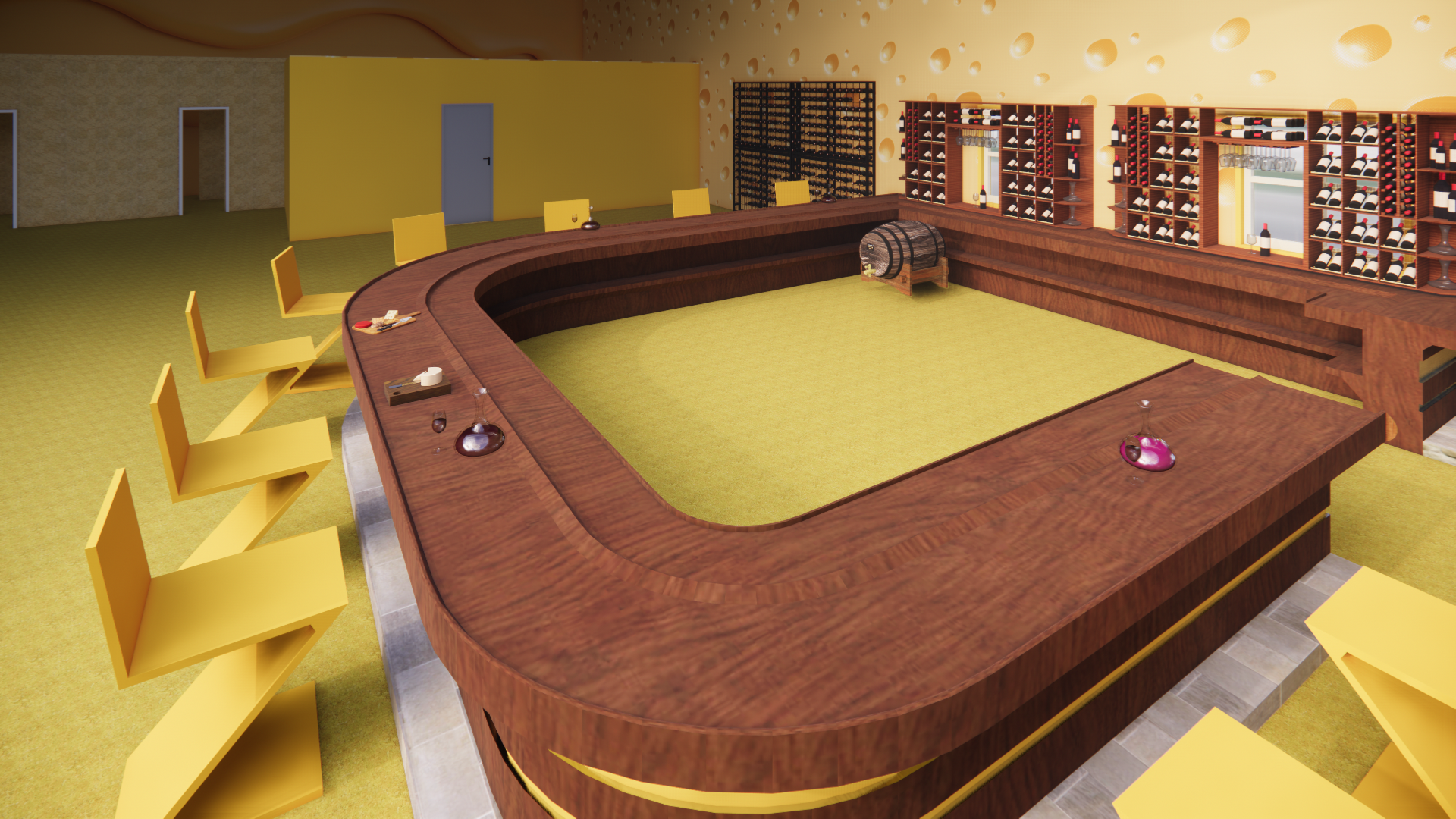
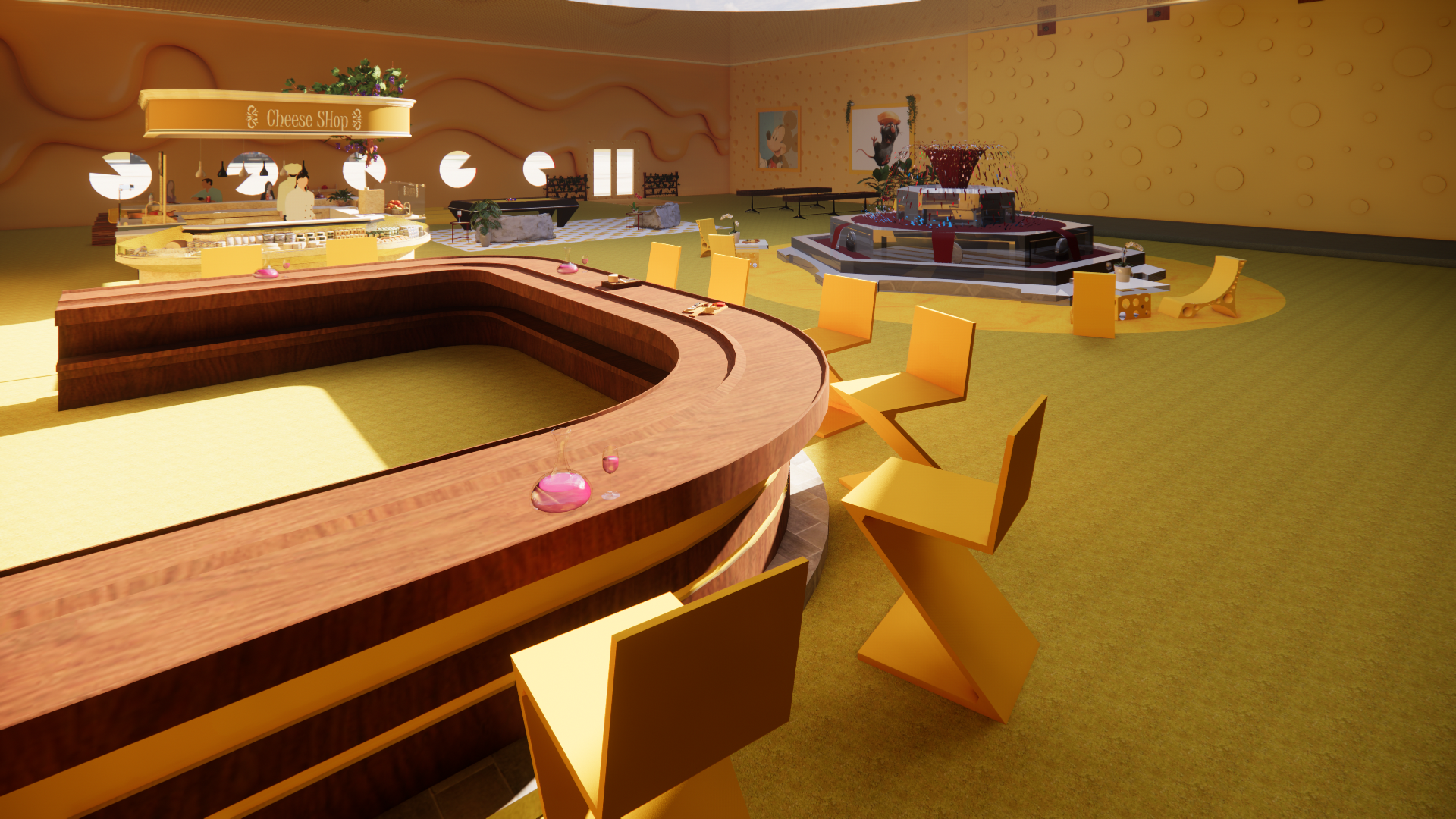
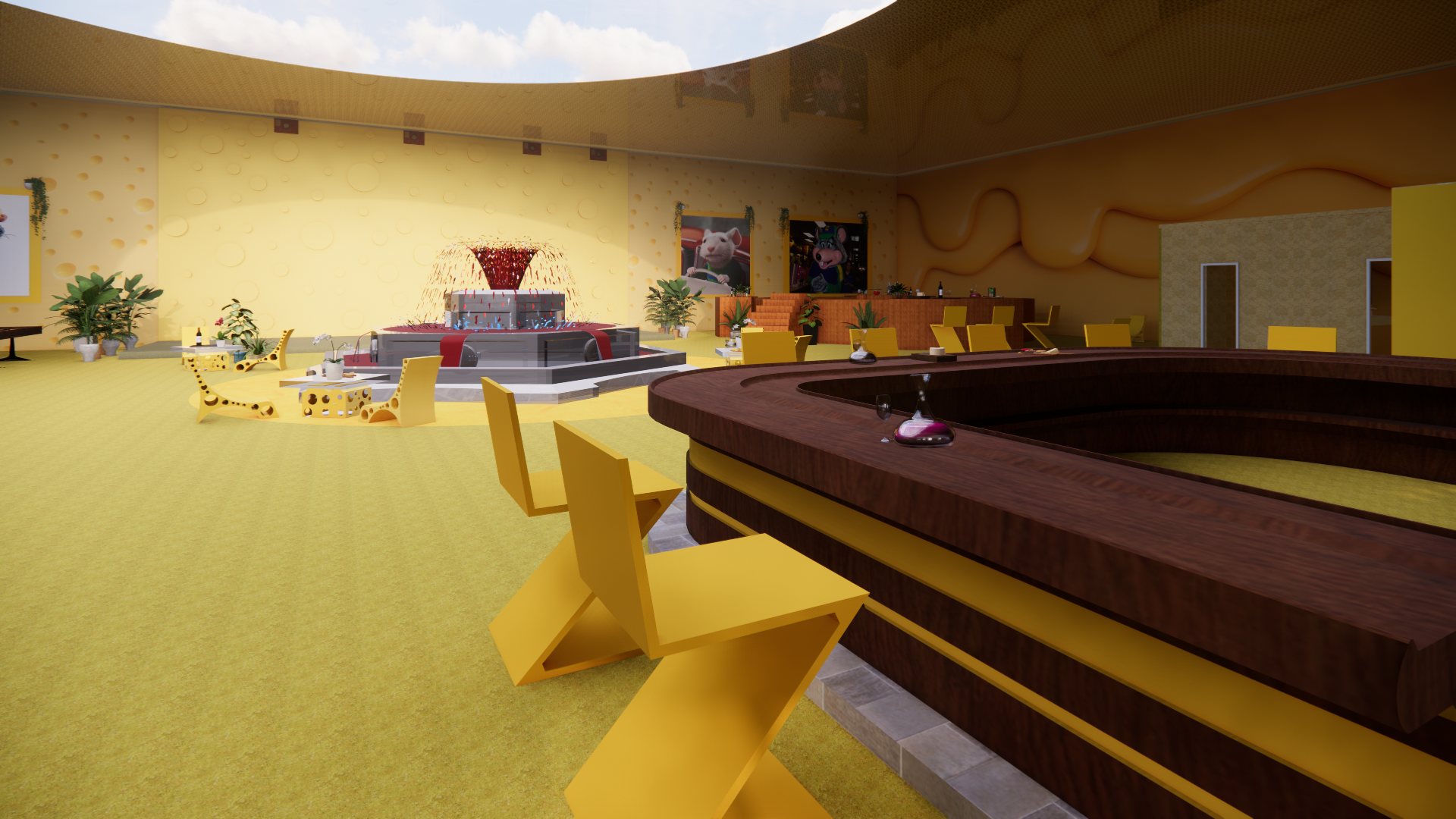
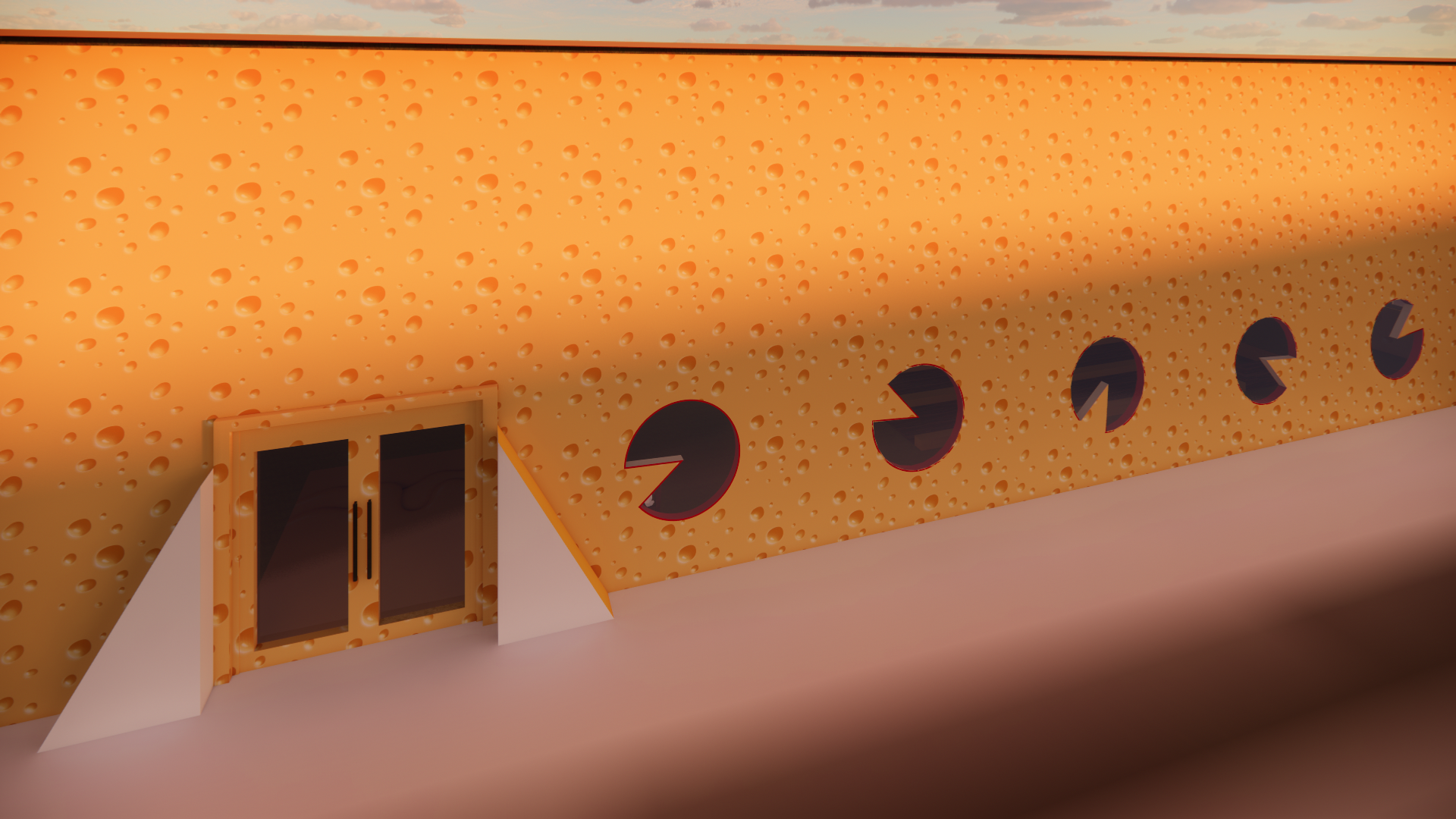
We had to design our own ‘Fun Palace’ using SketchUp. Naturally, I decided to do a Cheese Palace in an abandoned Chuck E. Cheese in Appleton, Wisconsin. Some key features included wine-bottle bowling, a hot tub with a fondue pit in the middle, and a cheese rock-climbing wall.
THEMED ENTERTAINMENT DESIGN COURSEWORK
Below is a list of courses I will take as part of my M.F.A. degree in Themed Entertainment Design at the Savannah College of Art and Design.
Design Visualization, Communication, and Documentation
Electronic Design - covering SketchUp, AutoCAD, Rhino, Grasshopper, Photoshop, and Autodesk Revit
Themed Entertainment Industry
Concept Design Studio
Component Design Studio
Digital Visualization for Production Design
Contemporary Art
Design for Themed Entertainment
Professional Practices in Production Design
Themed Environments and Attractions: Design Development
Collaborative Design Studio
Themed Entertainment Design M.F.A. Thesis
7 electives. To to-date, my electives have included:
Storyboarding and Visualization in the Animation Department
Tourism and Hospitality in the Luxury Brand Management Department.
Design Leadership
I had always loved fashion design on Project Runway, object design at my local museums, web design on Neopets, and home design on Sims, but I did not have a formal relationship or understanding of design until I dove into "Design for America" (DFA) at Columbia during my undergraduate years.
An overview of the design process we subscribed to at Design for America. Each section of the wheel had tangible exercises for us to better understand outcomes and test viability.
DFA is an interdisciplinary group of students working together using human-centered design to create local and social impact. We design products, programs, experiences, and innovative ways to tackle community problems.
Our studio at Barnard-Columbia fostered a community of design thinkers and social innovators. In addition to our project-based initiatives, we hosted workshops and events for our members as well as the general public.
A sample project from the Gensler and Rockaway Waterfront Alliance summer program I developed. My board and I developed a program curriculum, then led a team of designers on rebuilding a dangerous and barren stretch of land under the A-train line in the Hurricane Sandy-affected Far Rockaway neighborhood
During and outside of studio time, project teams collaborated to work on problems through hands-on application of the human-centered design process. This process involved gaining insight into human needs, rapid prototyping, user testing, and interdisciplinary teamwork. With community partnerships and the help of our mentors, we first seek to dive deep and understand who our users are before working to create solutions that address their needs.
Barnard-Columbia Design for America impacted my life in several ways:
Our Design for America leadership team.
Learning to Implementing Structural Change: The organization taught me how change systems because of feedback. As President, I began the 2015 studio by recruiting seven nonprofit community partners over the summer, so our teams could hit the ground running from the first week of the semester and dive into the research process. This taught me how to pitch our organization, develop prospects, and run my first 'business development' process.
Meaningful Community Building, Centered in Professional Development: to date, my DFA friends remain some of my strongest mentors. I managed our Executive Board, 40-member studio, and over 600 professional relationships. Those numbers don't convey the lasting impacts of our annual DFA Friendsgiving, our Columbia "Designing a Better World" Summit, our field trips to Cooper Hewitt, the Tompkins Square Halloween Dog Parade, RISE Rockaway or many more bonding moments.
Event and Program Planning: mid-year reviews, end-of-year reviews, research trips, sessions with The School for Visual Arts and a formal partnership with IBM and Gensler were just a handful of the programs I worked to spearhead during my collegiate years. I also netted $5,000 in my first semester as President through my on-campus fundraising parties.
I loved these days of sitting down with my peers from different corners of the Columbia spectrum and tackling challenges presented by our nonprofit partners ranging from increasing confidence of middle school girls in their STEM classes to increasing rate of recycling to reduce pizza waste.
BC-DFA is still a thriving community today at Barnard-Columbia! We have implemented dozens of year-long projects with nonprofits. Notably PROP police reform and Common Space initiative for student mental health (started under my leadership) still have dedicated design teams to this day.
Design leadership is an area that energizes me and gives me purpose. Notably, I was awarded Columbia University's highest graduation honor for my work leading DFA, the King's Crown Leadership Excellence Award for Community Building.
3D Printing and Research Design
This project was many moons ago, but speaks to my lifelong love for interdisciplinary research, academic curiosity, and project design. I spent a summer at Medrobotics, which created a self-supported "surgical snake" robot that enables physicians to operate through circuitous paths and through a small, single-site access into the body.
My project was to develop a camera/snake adjusting mechanism that would allow for greater precision during surgery. Robotic surgery can convert dangerous open-heart surgery into minimally invasive surgery, providing significant benefits for patients.
I designed, Python programmed, SolidWorks 3D-printed, and data tested a tool-mounted controller to increase precision and reduce operating costs. I built software using Microsoft Visual Studios, Python, and QNX Momentics.
My new remote effectively steered the robot. The previous joystick steering mechanism cost $20,000 per console sold but the new clasp controller cost only a few dollars even before commercialization. I submitted my research the Siemens Competition in Math, Science & Technology. Read the abstract below!
Academic Research Poster of my summer project at Medrobotics Corporation.
